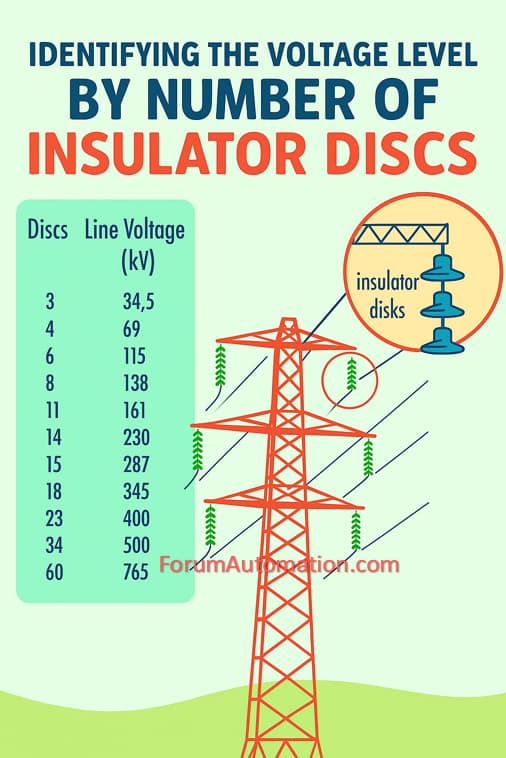How can you identify transmission line voltage by counting insulator discs?
Suspension and strain insulators in overhead transmission lines consist of several porcelain (or) polymer discs connected in series.
The number of discs is directly proportional to the line’s working voltage because each disc is intended to resist a specified voltage, typically 11-15 kV (RMS) under normal operating conditions.
By count the number of discs in an insulator string, we can calculate the voltage level of the transmission line.
| Discs | Line Voltage (kV) |
|---|---|
| 3 | 34.5 kV |
| 4 | 69 kV |
| 6 | 115 kV |
| 8 | 138 kV |
| 11 | 161 kV |
| 14 | 230 kV |
| 15 | 287 kV |
| 18 | 345 kV |
| 23 | 360 kV |
| 24 | 400 kV |
| 34 | 500 kV |
| 44 | 600 kV |
| 59 | 750 kV |
| 60 | 765 kV |
Because of the design margin, each disc is capable of withstanding a particular voltage; nevertheless, additional discs are added to account for pollution, humidity & mechanical strength.
In places that are more susceptible to contamination, such as those that are coastal or industrial, it is possible that more discs will be utilized.
In order to quickly calculate the transmission voltage without having to study complex system designs, field engineers frequently employ a technique known as Quick Field Identification.
You can also follow us on AutomationForum.co, Facebook and Linkedin to receive daily Instrumentation updates.
You can also follow us on ForumElectrical.com , Facebook and Linkedin to receive daily Electrical updates.
